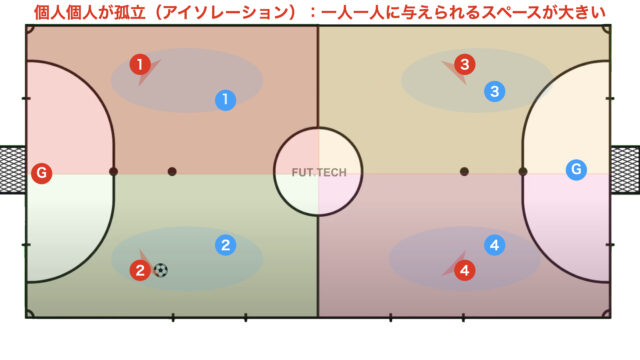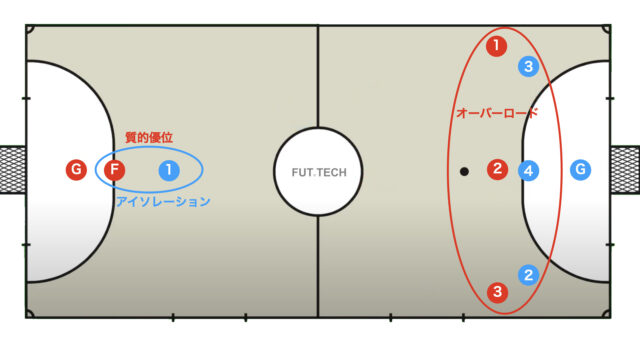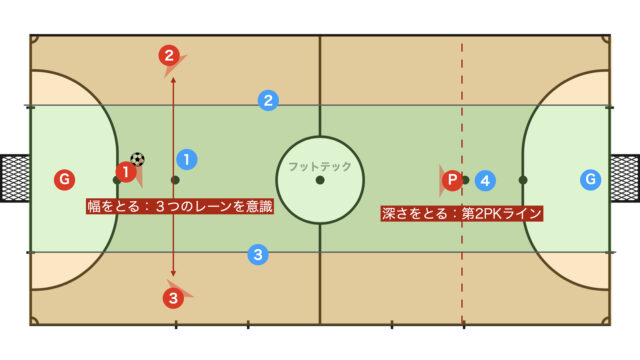If you play futsal, you have probably heard the word “entra” at least once.
So, do you know what the space between the lines (Entre Lineas) actually refers to?
In short, Entre Lineas (the space between the lines) refers to the gap between the opposing defenders’ lines.
This article will provide an in-depth explanation—from the definition of the space between the lines to its tactical advantages and specific strategies that utilize it.
- Entre Lineas: The Space Between the DF Lines
- Misconceptions About the Space Between the Lines
- Tactical Advantages of Utilizing the Space Between the Lines
- The Importance of the Dominant Foot for Players Receiving in the Space Between the Lines
- The Distance Between the Ball Holder and the 1st DF
- How to Utilize the Space Between the Lines
- Actual Attacks Utilizing the Space Between the Lines
Entre Lineas: The Space Between the DF Lines
In futsal tactics, Entre Lineas (the space between the lines) refers to the area between the defensive lines constructed by the defending team.
According to its definition, there are three types of Entre Lineas:
- The gap between the DF’s 1st and 2nd lines
- The gap between the DF’s 2nd and 3rd lines
- The gap between the DF’s 3rd and 4th lines (Goleiro)
Among these, the most crucial in futsal is the gap between the 1st and 2nd lines, and when people refer to “Entre Lineas”, they are generally referring to this one.
Thus, to properly understand Entre Lineas, one must grasp the concept of how the defending team constructs multiple DF lines via their defensive setup.
Misconceptions About the Space Between the Lines
When researching futsal tactics online, you will often encounter incorrect information.
This time, we will introduce some common misconceptions about the space between the lines.
The first example is the oversimplified idea that it is merely the gap between defenders.
Indeed, in the diagram above, the red (black A) player supports from the gap between the lines, but such an interpretation is not accurate.
The second example is the notion that it is simply the space between players on the same DF line.
This is merely the space between individual players, not the gap between the lines.
From this misconception arose the phrase “to break through the space between the lines”.
While expressions like “to utilize the space between the lines” or “to invade the space between the lines” are correct, the space between the lines is not something that should be “broken through”.
Tactical Advantages of Utilizing the Space Between the Lines
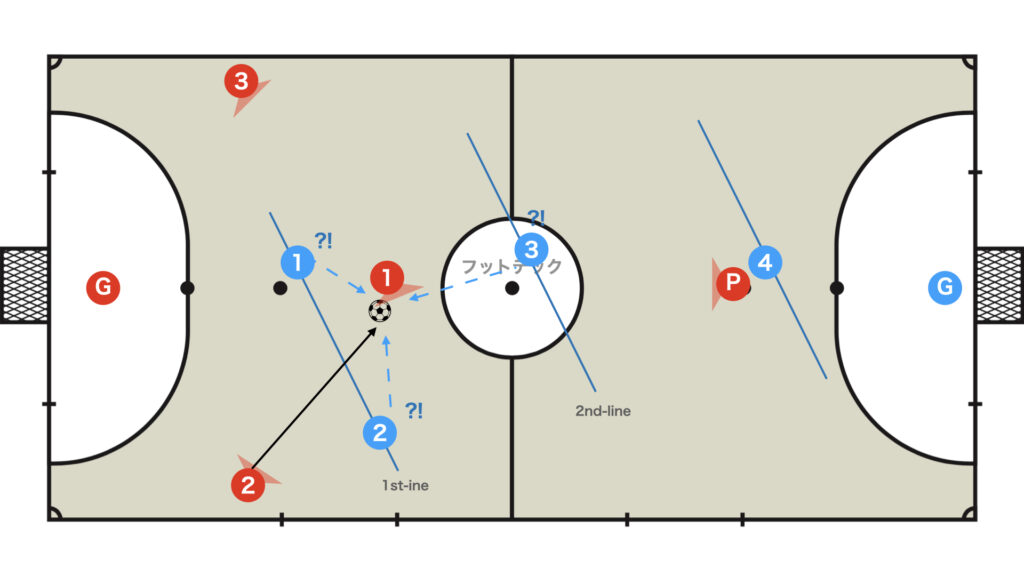
The tactical advantage of utilizing the space between the lines is that it creates confusion for a defense organized in multiple lines.
As shown in the diagram above, when the ball enters the gap, uncertainty arises over whether a player from the 1st or 2nd line should respond, ultimately leading to defensive breakdowns.
The Importance of the Dominant Foot for Players Receiving in the Space Between the Lines
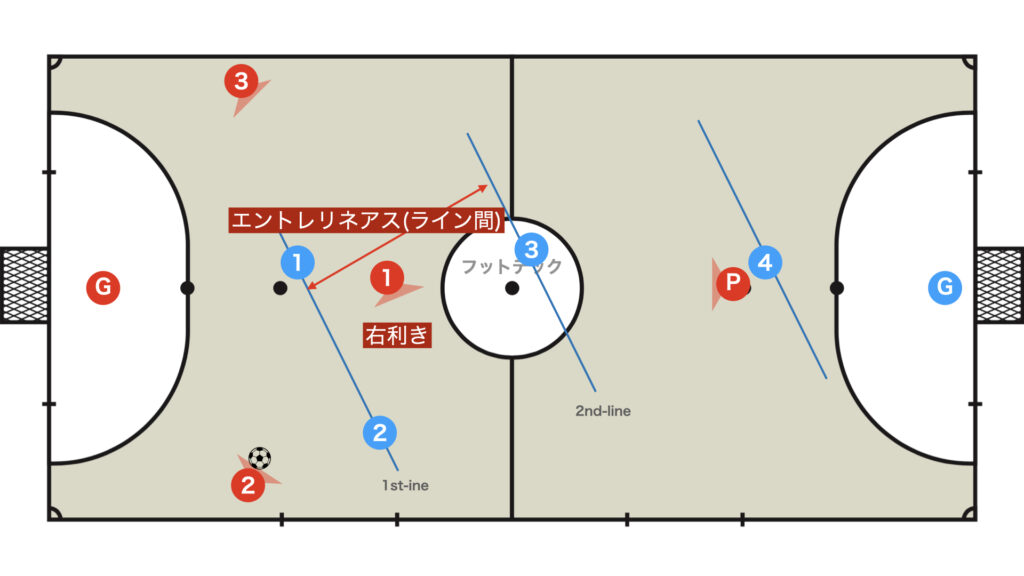
It is ideal for a player—whose dominant foot is on the same side as the ball—to enter the space between the lines.
This positioning allows the player to trap the ball with the foot furthest from the opposing DF (blue number 1) and then quickly turn to face forward.
In addition, it is very important to quickly check the situation ahead by turning your head before executing the turn.
The Distance Between the Ball Holder and the 1st DF
No Pressure
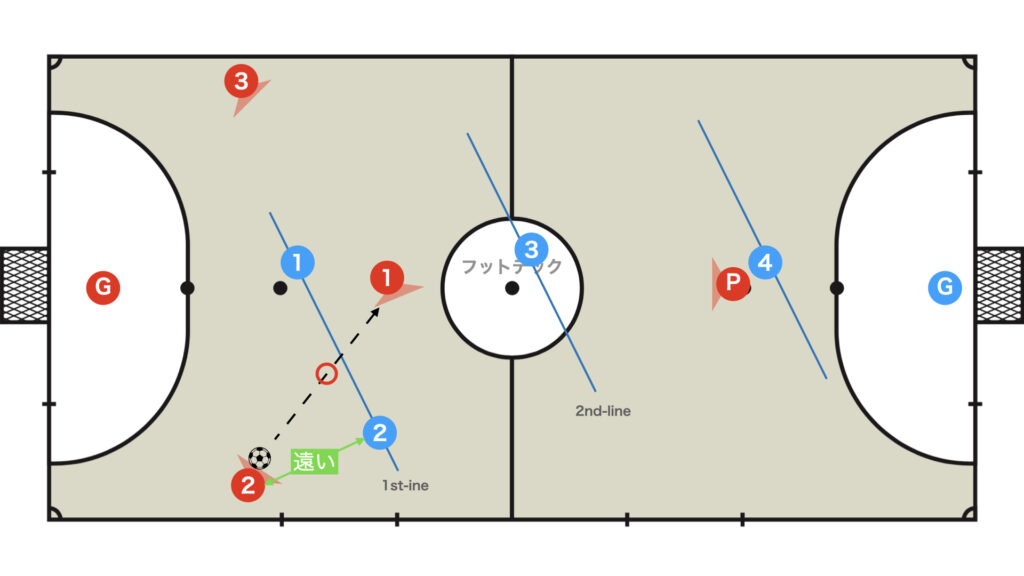
When targeting the space between the lines, it is essential to ensure that the ball holder is not under pressure.
Under Pressure

When pressure is applied, not only is the passing lane into the space between the lines cut off by the 1st DF, but the 2nd DF (blue number 1) remains to cover the passing lane to the opposite-side ala (red number 3), resulting in a deadlock.
If this happens, it is preferable for the player in the space between the lines to drop back to the 1st line and provide parallel support to the ball holder (red number 2).
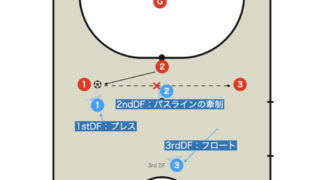
How to Utilize the Space Between the Lines
Utilizing the space between the lines is possible in various formations, but here we will introduce the most common example found in a 3-1 formation.
Fixo in the Space Between the Lines
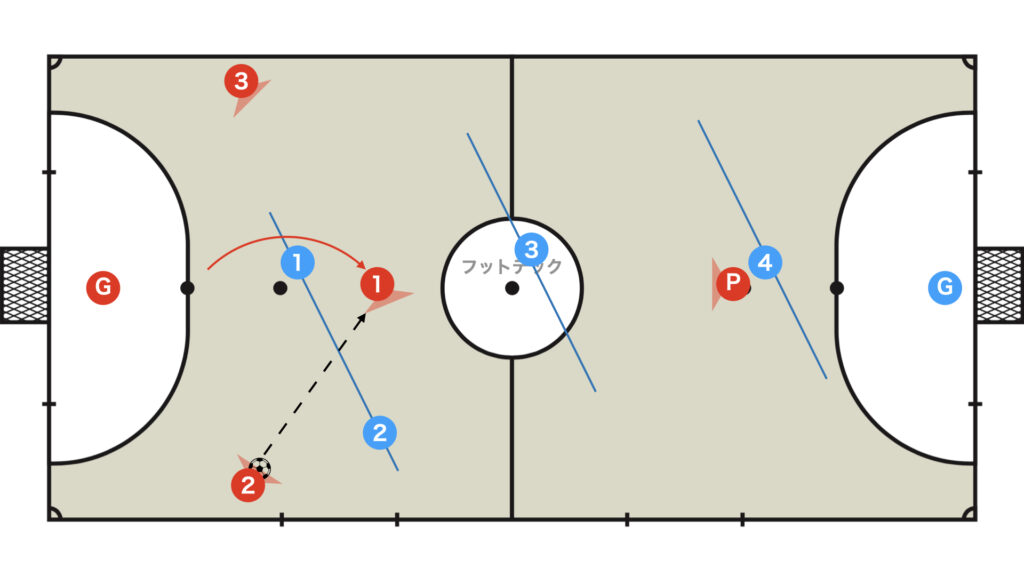
Since many teams follow the defensive principle of passing by moving around behind the opponent, it is desirable for the fixo to shift into the space between the lines by moving around the back of the opposing DF (blue number 1) as much as possible.
Opposite-side ala in the Space Between the Lines (Rotation)

Since the opposite-side ala invades from the blind spot, the DF finds it extremely difficult to cope.
At this moment, the fixo (red number 1) should widen the formation to restore balance on the floor.
This series of movements in futsal is known as a rotation (hedondo).
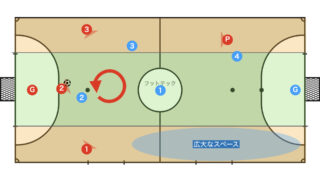
Actual Attacks Utilizing the Space Between the Lines
When the 1st Line Responds
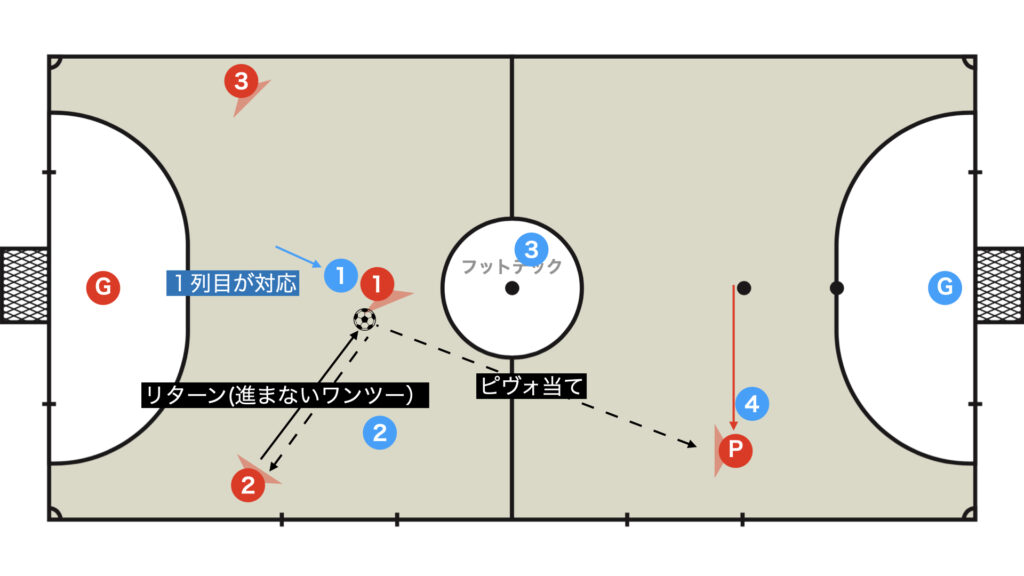
It is preferable for the pivo to drift to the side so that a pass to the pivo can be executed from the space between the lines.
While it requires a bit of skill, being able to deliver the ball directly to the pivo from the space between the lines enables advancement while reducing the risk of losing possession.
Non-progressive One-Two
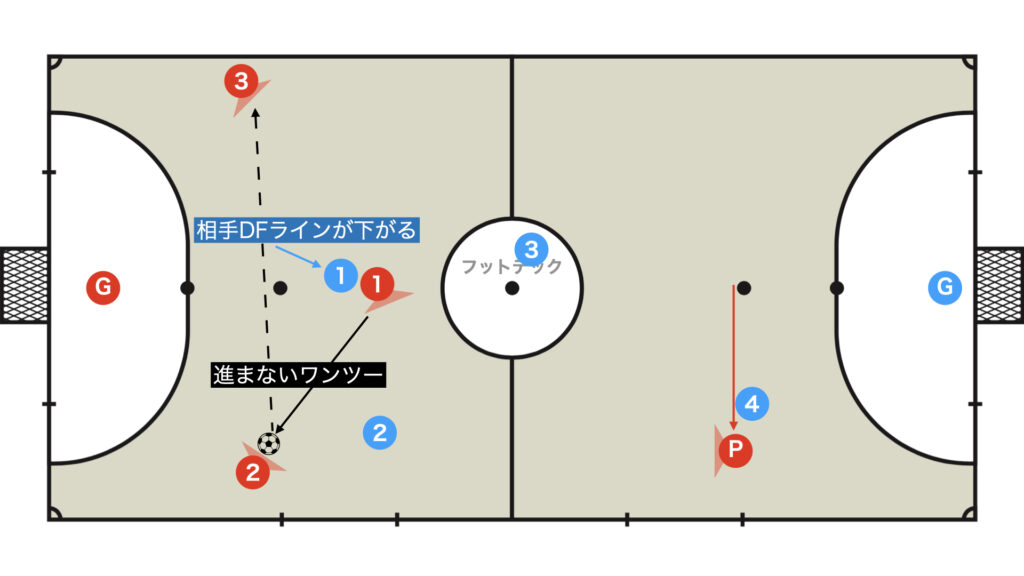
Performing a non-progressive one-two can force the opposing DF line to drop back.
Backdoor (One-Two)

If red number 2 is closely marking, a non-progressive one-two becomes unfeasible, so the player should quickly target the space behind and aim for a one-two (backdoor).
Turn
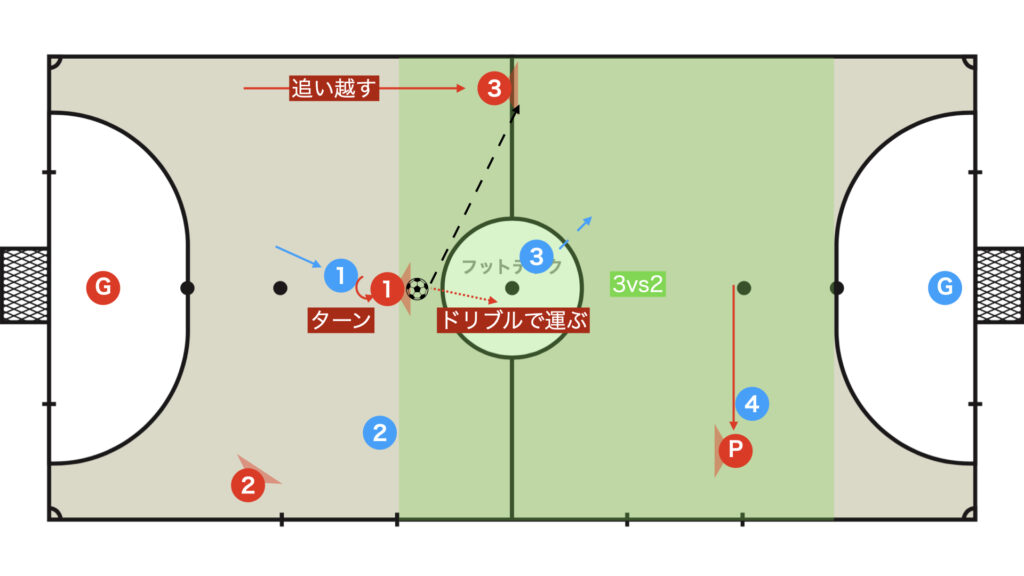
Use your body to deliver the ball to an area unreachable by the foot of the DF (blue number 1) who is pressing from behind.
When the 2nd Line Responds
Non-progressive One-Two (Return)
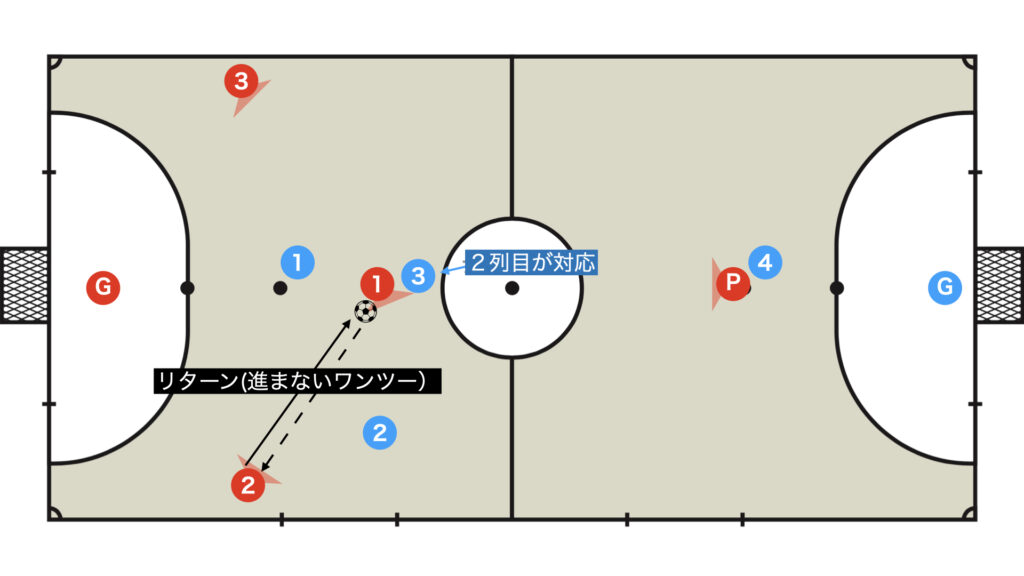
When the 2nd line responds, forcing a forward move may risk losing the ball, so it is safer to return it to open space.
Opposite-side Ala Backdoor
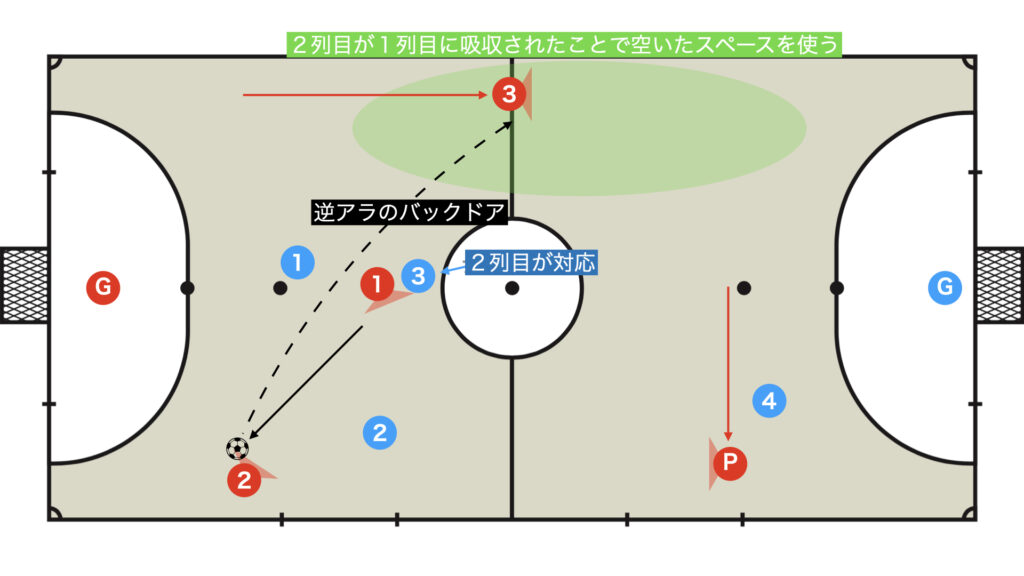
Utilize the space that opens up when the 2nd line commits to covering the opposite-side ala’s backdoor.
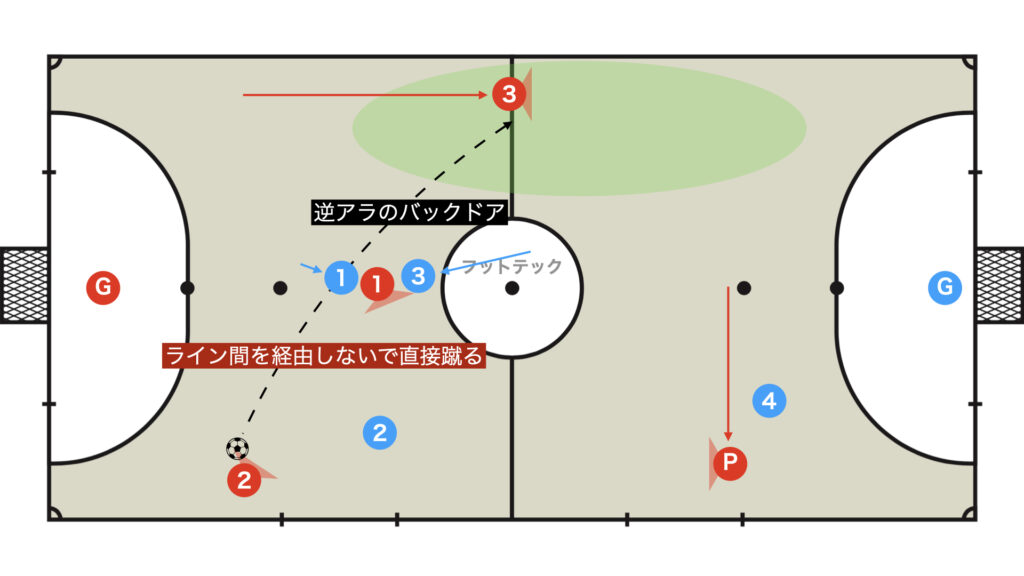
If the opposing DF makes an error, it is acceptable to bypass the space between the lines and kick directly.
Thank you very much for reading this article to the end.
If you found this article useful, please consider sharing it using the social media share buttons above.
We regularly share valuable insights on futsal tactics on Twitter, so if you haven’t followed us yet, we’d appreciate your support!
We are committed to raising the level of futsal in Japan by sharing high-quality information through discussions with individuals who have coaching experience in the F.League and overseas.
If you have any questions or notice any mistakes, feel free to leave a comment below.
We update our articles regularly, so if you’d like to keep reading, please bookmark our site or search for “FutTech”!
